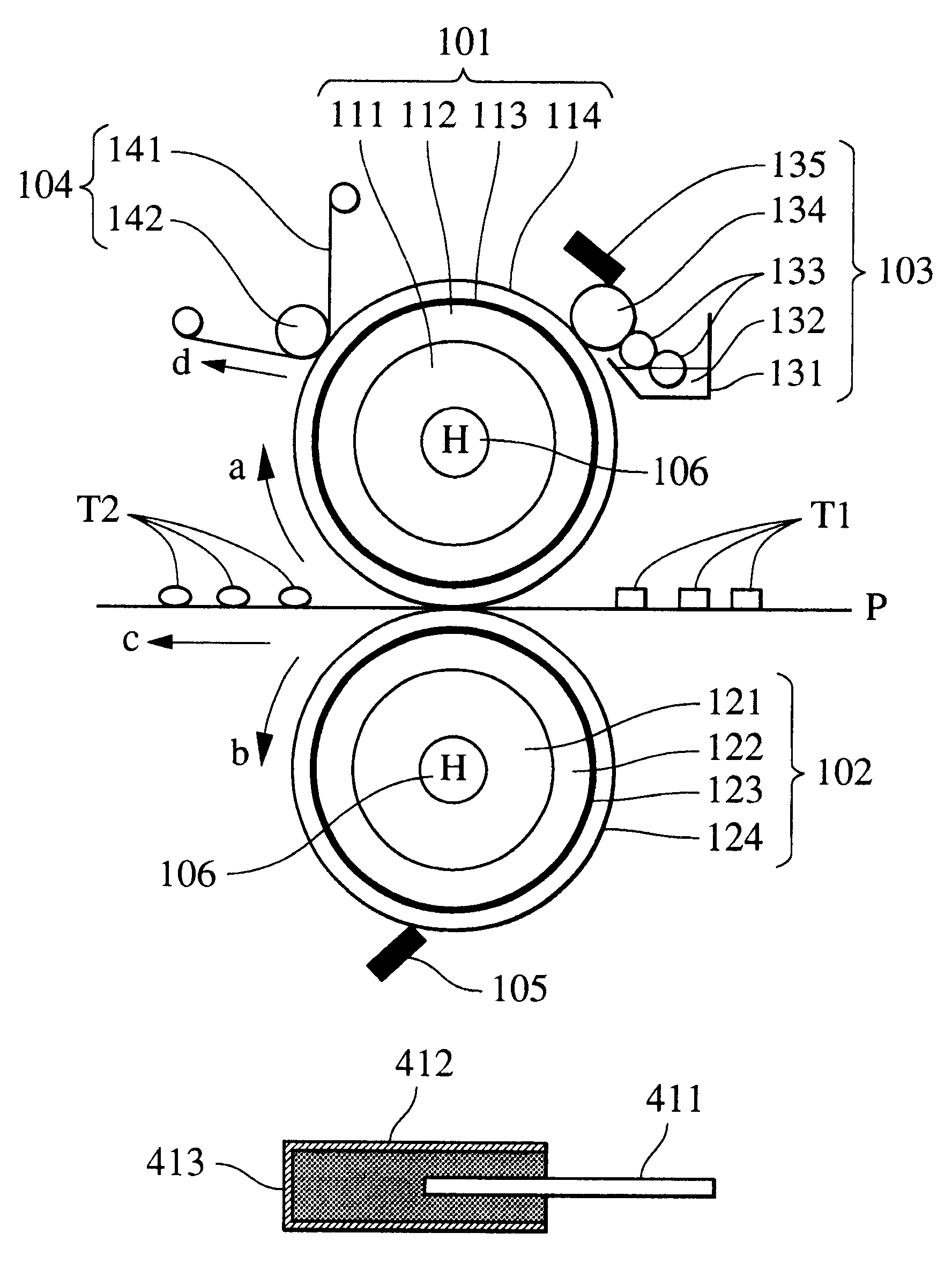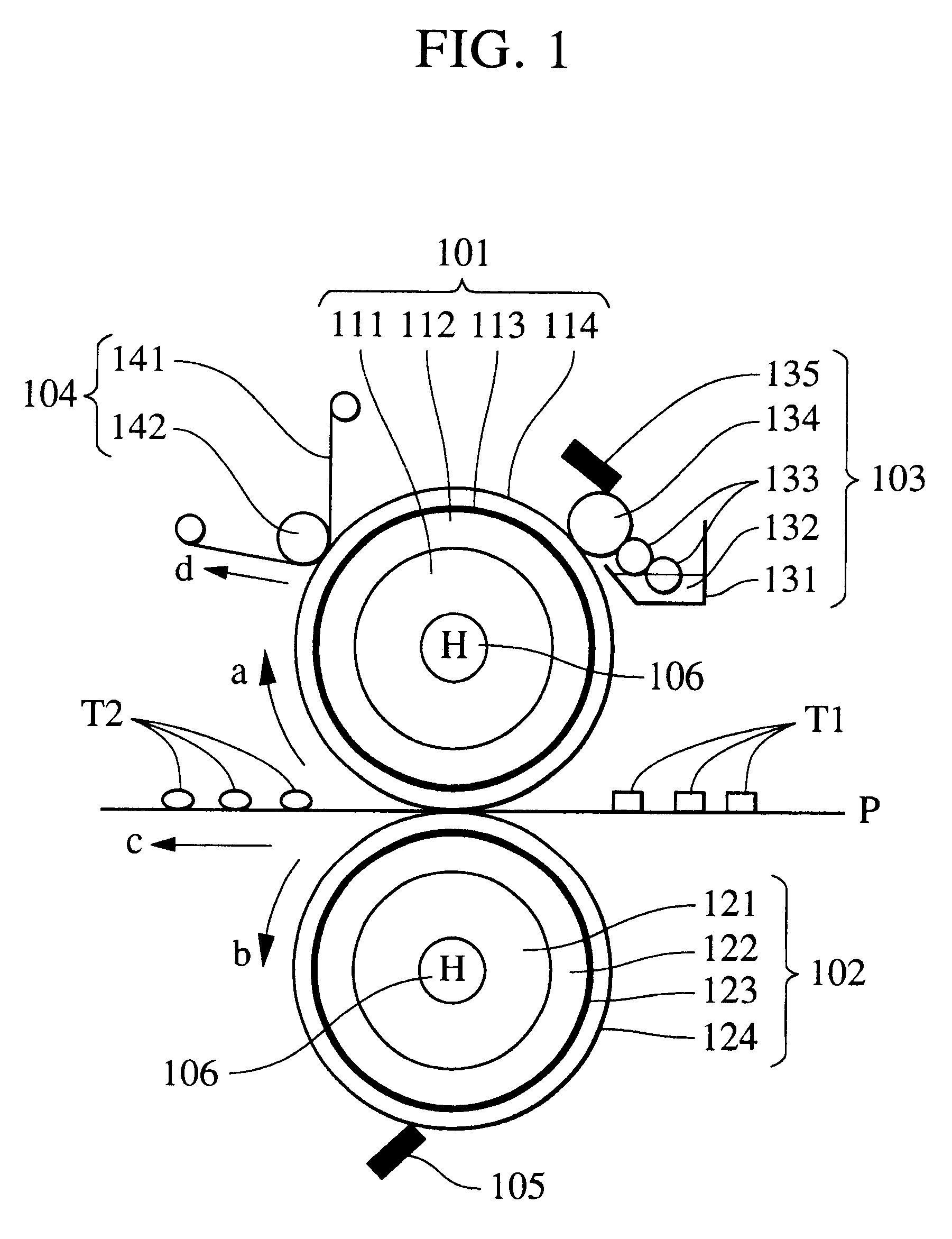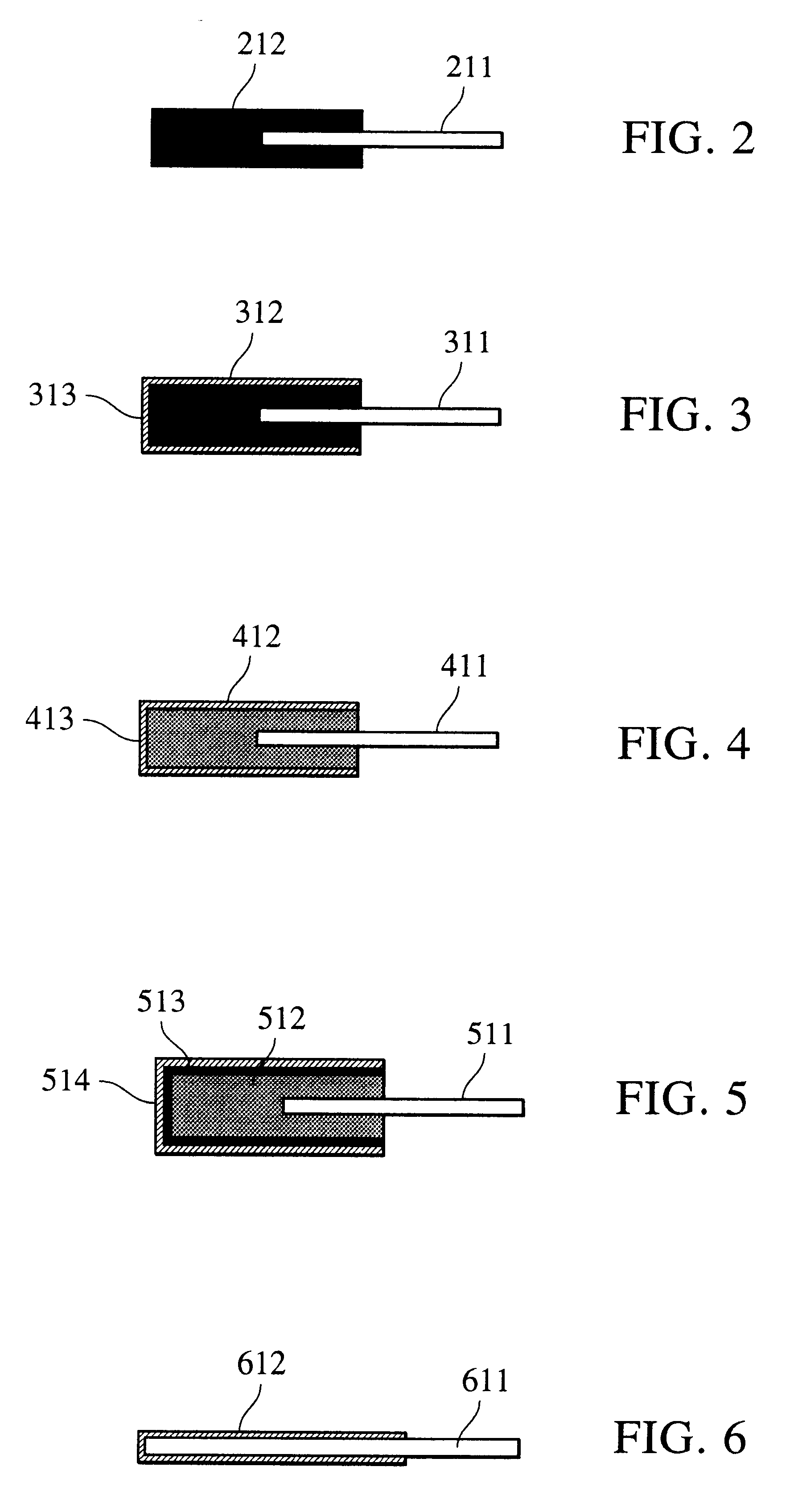Release oil regulating blade, fixing device, and image-forming apparatus
- Summary
- Abstract
- Description
- Claims
- Application Information
AI Technical Summary
Benefits of technology
Problems solved by technology
Method used
Image
Examples
example 1
A fluororubber blade was produced by vulcanizing and molding a fluororubber polymer (trade name "DAI-EL G-723" manufactured by Daikin Industries, Ltd.). The entire surface of the fluororubber section of the fluororubber blade was subjected to primer treatment, and a toluene-diluted silicone rubber solution was sprayed thereon so as to have a thickness of approximately 40 .mu.m after evaporation of the toluene, followed by standing at room temperature for 30 minutes in order to evaporate the toluene. Next, in a hot-air furnace, primary curing was performed at 130.degree. C. for 1 hour, and then secondary curing was performed at 200.degree. C. for 4 hours to obtain a blade. FIG. 3 is a schematic diagram showing a cross section of the blade in Example 1. The blade includes a metallic plate 311 as a support, a fluororubber layer 312 as an elastic layer formed on the metallic plate 311, and a silicone rubber layer 313 formed on the surface thereof.
example 2
A silicone rubber blade was produced by molding, vulcanizing, and bonding a silicone rubber (trade name "DY32-916u" manufactured by Dow Corning Toray Silicone Co., Ltd.) so as to have the same shape as that of the fluororubber layer of the fluororubber blade in Example 1. Next, the entire surface of the silicone rubber blade was subjected to primer treatment, and a toluene-diluted silicone rubber solution was sprayed thereon so as to have a thickness of approximately 20 .mu.m after evaporation of the toluene, followed by standing at room temperature for 30 minutes in order to evaporate the toluene. In a hot-air furnace, primary curing was performed at 130.degree. C. for 1 hour, and then secondary curing was performed at 200.degree. C. for 4 hours to obtain a blade. FIG. 4 is a schematic diagram showing a cross section of the blade in Example 2. The blade includes a metallic plate 411 as a support, a silicone rubber layer (lower layer) 412 as an elastic layer formed on the metallic p...
example 3
A silicone rubber blade was produced by molding, vulcanizing, and bonding a silicone rubber (trade name "DY32-916u" manufactured by Dow Corning Toray Silicone Co., Ltd.) so as to have the same shape as that of the fluororubber layer of the fluororubber blade in Example 1. Next, the entire surface of the silicone rubber blade was subjected to primer treatment, and a polyamine-based fluororubber latex (trade name "DAI-EL GL-252" manufactured by Daikin Industries, Ltd.) was sprayed thereon so as to have a thickness of approximately 40 .mu.m after drying, followed by drying at 50.degree. C. for 30 minutes. A primer was applied thereto, and heat treatment was performed for 60 minutes at 200.degree. C. in a hot-air furnace to cure the fluororubber layer as well as to modify the primer on the surface of the fluororubber layer. Primer treatment was performed again, and a toluene-diluted silicone rubber solution was sprayed so as to have a thickness of approximately 20 .mu.m after evaporatio...
PUM
 Login to View More
Login to View More Abstract
Description
Claims
Application Information
 Login to View More
Login to View More - R&D
- Intellectual Property
- Life Sciences
- Materials
- Tech Scout
- Unparalleled Data Quality
- Higher Quality Content
- 60% Fewer Hallucinations
Browse by: Latest US Patents, China's latest patents, Technical Efficacy Thesaurus, Application Domain, Technology Topic, Popular Technical Reports.
© 2025 PatSnap. All rights reserved.Legal|Privacy policy|Modern Slavery Act Transparency Statement|Sitemap|About US| Contact US: help@patsnap.com



